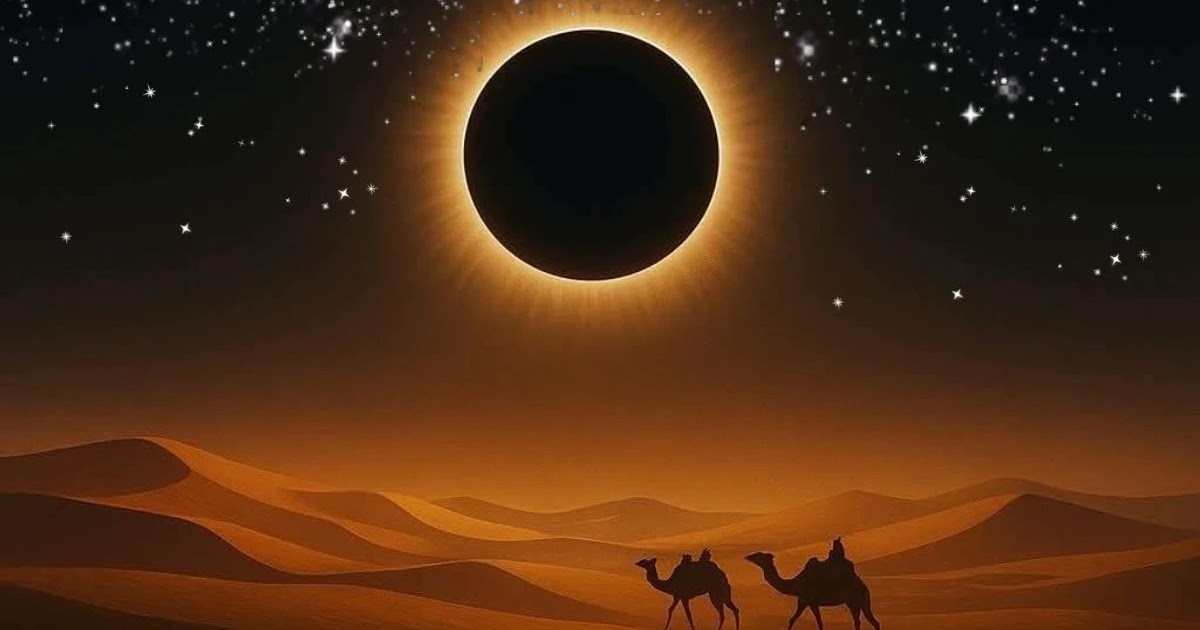It is going to have a different scientific importance due to its duration. In the year 2027, the world will witness such an astronomical event when day will turn into night for 6 minutes and 23 seconds. Space science experts and space lovers are already very excited about this date and have started preparations. According to astronomers, a total solar eclipse will be visible on August 2, 2027, which will be very unique due to its duration and effect. On this day, daylight will suddenly fade in many areas, the temperature will start decreasing, stars will start appearing in the sky and for a few moments it will feel as if the movement of the earth has stopped.
The longest solar eclipse of the 21st century
This event will give scientists an opportunity to understand the hidden secrets of space and the universe more closely. According to scientists, such a long total solar eclipse has not been seen in the last hundred years and it will be very rare to see it again. On August 2, 2027, this will be the longest solar eclipse of this century, which will begin over the Atlantic Ocean and the Moon’s shadow will first touch the Earth near the Strait of Gibraltar. After this, this darkness will move through southern Spain, Morocco, Algeria, Tunisia, Libya, Egypt and parts of the Middle East. In these areas the sun will be completely hidden for about six and a half minutes. Large parts of the US and South America, including Brazil, will not see this extraordinary event at all. During the eclipse, the Moon will completely cover the Sun and the day time will turn into evening. The temperature may drop by 5 to 10 degrees, wind direction may change and unusual behavior of birds and animals may be seen, which makes this event more special.
A unique opportunity for scientists
All total solar eclipses are scientifically important, but the duration of most eclipses is less than 3 minutes, which limits the time for study. The eclipse of 2027 is also special because it will pass through densely populated and easily accessible areas. The eclipse in 2027 will give astronomers almost double the time, allowing them to make detailed observations of the changes in the Sun, its corona and the Earth’s atmosphere. This eclipse will be like an “open lab” for space research, where scientists will be able to gather many important information about the Sun’s outer layers, magnetic field and cosmic energy. This will make it an ideal opportunity for studying scientific activities like astronomy, temperature changes and animal behaviour. According to the report of Space.com, the next solar eclipse of such duration is not possible until 2114.
Rare coincidence hidden behind long eclipse
A solar eclipse occurs when the Sun, Moon and Earth come exactly in line. When the Moon comes between the Sun and blocks its rays, darkness spreads on the Earth. Although total solar eclipses occur once every 18 months, eclipses of such long duration are extremely rare. But on August 2, 2027, Earth will be at its farthest point from the Sun, making the Sun appear relatively smaller. On the other hand, at the same time, the Moon will move forward in its orbital path and reach its closest point to the Earth. Because of this, the Moon will appear larger in size and will be able to cover the Sun for a longer time. This rare astronomical coincidence makes this eclipse exceptionally long.
This amazing sight will be visible every minute
The Moon will begin covering the edge of the Sun about 60-80 minutes before reaching totality. Gradually the sunlight will reduce and it will appear thinly sliced like the moon. After this there will be darkness, the temperature will start falling, stars will be visible and the corona of the Sun will shine like a milky ring. Scientists are looking at it like a live scientific laboratory, because the opportunity to see the Sun’s corona so clearly and for so long may not come again for decades.
You will not be able to see this solar eclipse in India
This magical darkness will last for 6 minutes 23 seconds. Then gradually the sunlight will return, normal conditions will be restored and observatories (planetariums) around the world will record every moment. This solar eclipse will be an exciting experience not only for scientists but also for the common people. India does not fall in the path of totality of this eclipse. However, a mild partial solar eclipse may be visible in some parts of the country. It is safe to view the Sun with the naked eye during periods of totality, but it is dangerous to look at the Sun without protection during partial phases. Experts recommend using solar filters, certified eclipse glasses or other approved protective equipment.
It will be an amazing sight to see darkness during the day for such a long period on August 2, 2027. The sun will disappear, stars will appear in the sky, the temperature will start falling and a mysterious peace will prevail in the atmosphere. This sight will be an occasion to be remembered throughout the life for the people living in those areas. Millions of tourists from all over the world are planning to see this eclipse, because the next time such a sight will have to wait for more than a century.
